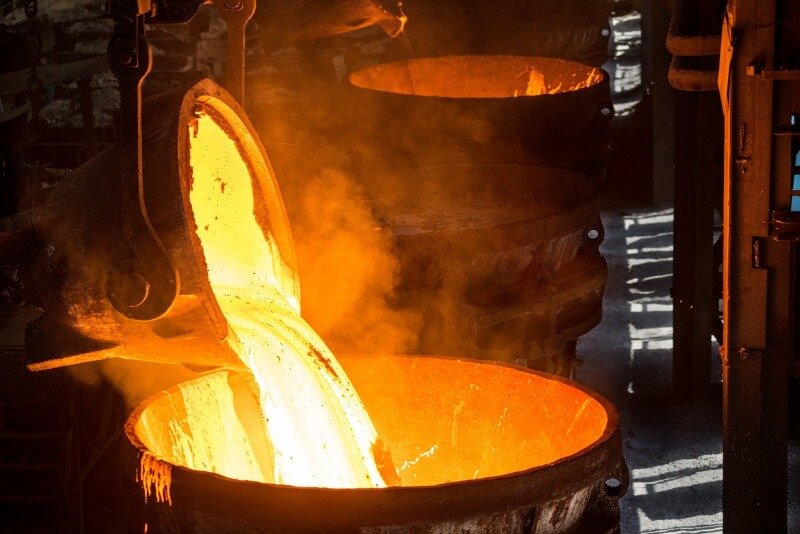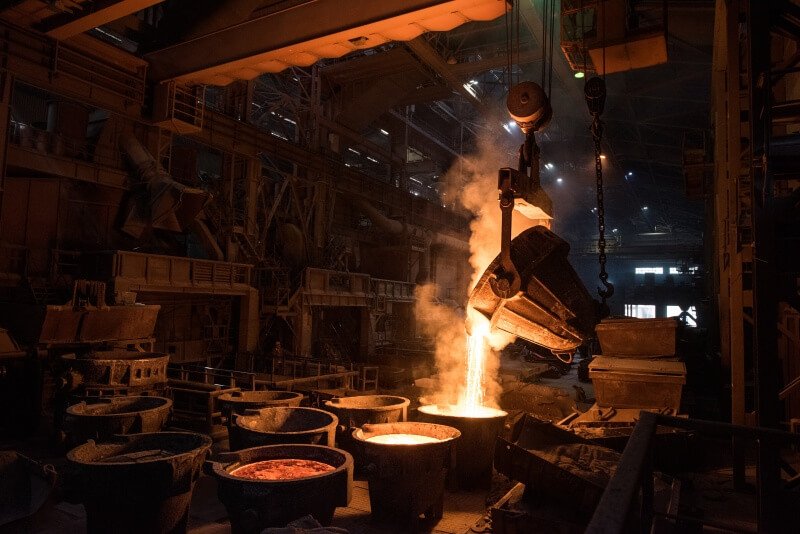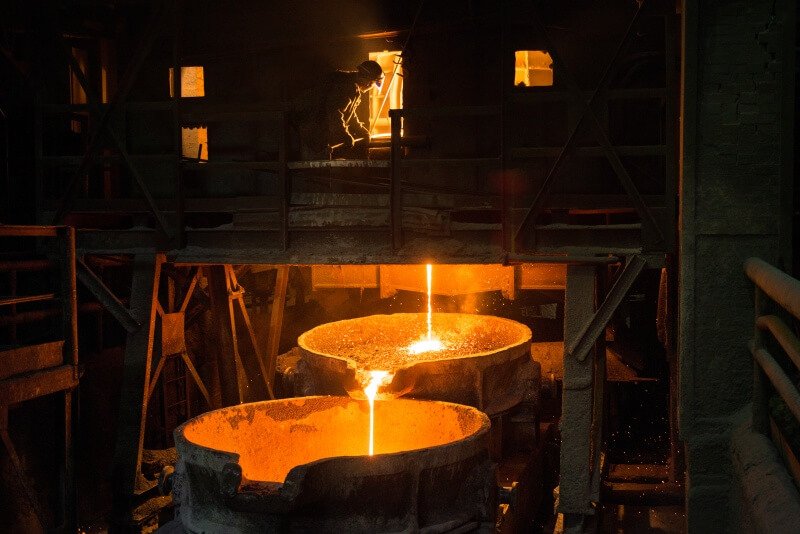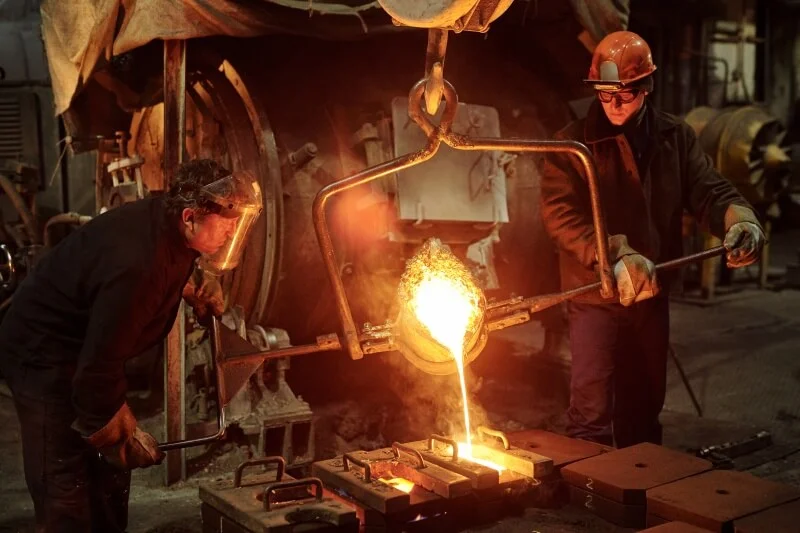Standard metals often miss critical targets for corrosion, weight, or strength, forcing compromises that cause premature failures, higher maintenance, and weaker products. A casting alloy solves this by blending metals to engineer properties precisely for your application—delivering the durability, weight, and resistance you need without trade-offs.
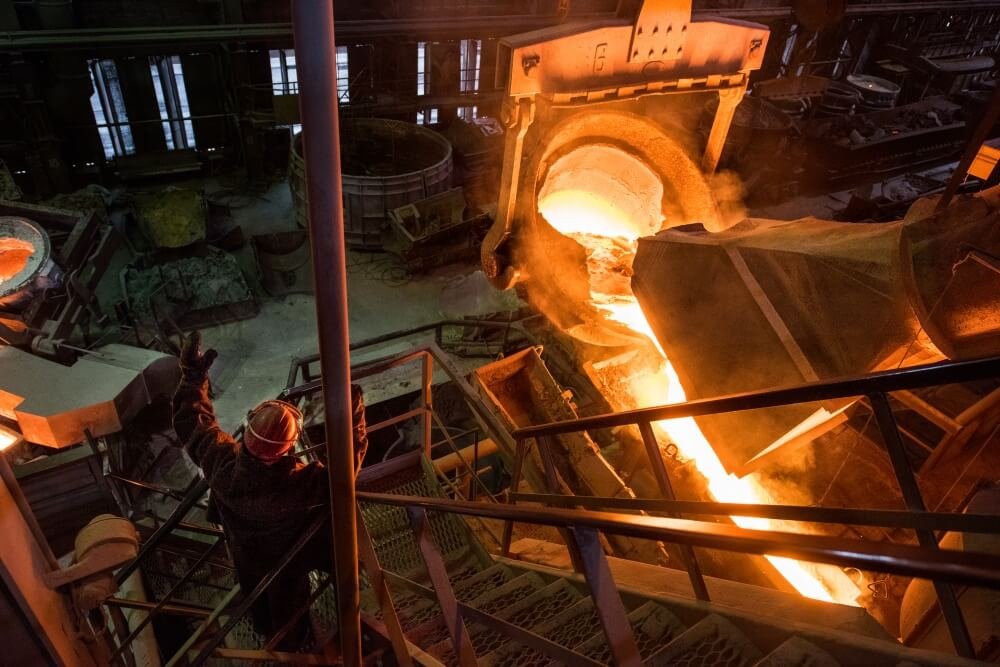
Defining the Casting Alloy Process
Here’s the deal: alloy casting is a process that melts and combines different metals and elements to form a new, superior material.
What is a casting alloy, exactly?
A casting alloy is a custom blend of a primary metal with other elements, designed to achieve specific performance traits. This mixture is melted and poured into a mold to create a component. It’s how you get properties that a single metal cannot offer alone.
- A base metal like aluminum, steel, or zinc.
- Added elements for enhanced properties.
The fundamental manufacturing steps
The process begins by melting and mixing your chosen metals in precise ratios to create the molten alloy. This liquid is then poured into a custom mold, where it cools and solidifies into the final shape. Post-casting finishing refines the component for its end use.
- Melting and precise mixing.
- Pouring into the mold and solidifying.
- Finishing, cleaning, and machining.
Why combine metals in the first place?
You combine metals to engineer a material that overcomes the limitations of a single element, like poor corrosion resistance or excess weight. This allows you to create a component that is strong yet lightweight or durable yet machinable. Ultimately, it’s about achieving optimal performance for a specific job.
- To enhance strength and overall durability.
- To improve resistance to corrosion, heat, or wear.
- To reduce component weight or improve machinability.
Key Takeaway: Alloy casting strategically creates custom materials by combining metals, resulting in components with targeted properties superior to standard metals.
| Concept | Description |
|---|---|
| Alloy | A mixture of a primary metal with other elements. |
| Casting | The process of pouring molten material into a mold. |
| Alloy Casting | Creating parts from a molten mixture of metals. |
This table clarifies that alloy casting synthesizes material science with a proven manufacturing method.
Key Casting Alloy Features
You might be wondering: what makes these alloys so effective in manufacturing? The answer lies in key physical properties.
Why is material fluidity important?
Fluidity refers to how well the molten alloy flows into and fills the intricate details of a mold before it solidifies. High fluidity is essential for producing complex, thin-walled parts without defects. This ensures the final component perfectly matches your design specifications.
- Ensures complete mold filling.
- Allows for intricate and complex part designs.
- Reduces the risk of casting defects.
Understanding alloy machinability
Machinability describes how easily a solidified casting can be cut, drilled, or finished into its final form. An alloy with good machinability reduces production time and cost by simplifying post-casting processes. This feature is critical for achieving tight tolerances and smooth surface finishes.
- Allows for easier forming and shaping.
- Leads to faster production cycles.
- Reduces wear and tear on cutting tools.
Key Takeaway: High fluidity ensures complex designs are cast accurately, while good machinability streamlines finishing, making the entire manufacturing process faster and more cost-effective.
| Feature | Impact on Manufacturing |
|---|---|
| Fluidity | Ensures the mold fills completely for intricate designs. |
| Machinability | Reduces time and cost for post-casting finishing. |
This table connects each feature directly to its tangible benefit in a production environment.
Strength in Your Casting Alloy
But what about durability? The strength and resilience of a casting alloy are not accidental; they are engineered from the start.
How is superior strength achieved?
Superior strength is achieved by starting with a strong base metal, like steel, and combining it with other elements. These additions create a new metallic structure that can withstand higher loads and stresses. The specific recipe of your alloy directly determines its ultimate strength and durability.
- Start with a high-strength base metal.
- Add elements that enhance the metallic matrix.
- Tailor the blend for specific load-bearing needs.
Building corrosion resistance
You can build exceptional corrosion resistance by adding rust-proof metals like chromium or nickel to your alloy base. These elements form a protective, passive layer on the component’s surface, shielding it from moisture and chemicals. This is crucial for parts used in harsh or outdoor environments.
- Add corrosion-proof elements like nickel or chromium.
- The alloy forms a protective surface layer.
- The final part gains a longer lifespan.
Key Takeaway: The strength and corrosion resistance of a casting alloy depend entirely on the choice of base metals and additives, allowing you to engineer a part for its specific operational environment.
| Property | How It’s Achieved | Key Benefit |
|---|---|---|
| Strength | Combining a strong base metal with other elements. | Increased durability and load-bearing capacity. |
| Corrosion Resistance | Adding rust-proof metals like nickel or chromium. | Longer component lifespan in harsh environments. |
This summary shows how specific formulation choices lead to critical performance outcomes.
Zinc as a Versatile Casting Alloy
So, where do you see this in action? Zinc is a prime example of a versatile and efficient casting alloy used across many industries.
What are its primary properties?
Zinc alloys are known for their exceptionally low melting point and high fluidity, making them very easy and fast to cast. While not ideal for high-temperature applications, their flexibility allows for the creation of intricate, detailed parts. This makes them a cost-effective choice for complex components.
- Low melting point for fast casting cycles.
- Excellent flexibility for detailed designs.
- High-impact strength and good machinability.
Common industrial applications
Thanks to its properties, you will find zinc alloy castings in a wide range of products. They are commonly used in automotive components, electrical equipment, and even medical devices. Their castability also makes them popular for decorative hardware and jewelry.
- Automotive industry (e.g., housings, brackets).
- Medical and electrical equipment.
- Marine and construction hardware.
Key Takeaway: Zinc alloys offer an excellent balance of castability, detail, and cost-effectiveness, making them a go-to choice for complex components that do not require high-temperature resistance.
| Zinc Alloy Characteristic | Advantage | Common Use Case |
|---|---|---|
| Low Melting Point | Easy and fast to cast. | Electrical equipment components. |
| High Flexibility | Good for complex, detailed parts. | Decorative hardware. |
This table highlights the direct link between a zinc alloy’s properties and its practical industrial applications.
Tin & Copper Casting Alloy Uses
Let’s move on to two other foundational alloys: tin and copper. Each serves distinct, critical functions in manufacturing.
Tin alloys for coatings and bearings
Tin alloys are prized for their low friction and corrosion-resistant properties, making them ideal for protective coatings on other metals. They are also used extensively as bearing materials in industrial machinery. You can find them in products ranging from tin-coated steel to superconducting magnets.
- Used for protective coatings and surfaces.
- Act as low-friction bearing materials.
- Key component in solder and superconducting magnets.
Are copper alloys good for instruments?
Yes, copper alloys like brass and bronze are exceptional for musical and technical instruments due to their acoustic properties and durability. You’ll find them in everything from bells and trumpets to precision radiator cores. Their good machinability also makes them perfect for technical parts like pipe fittings.
- Ideal for musical instruments like bells and gongs.
- Used in technical instruments and radiator cores.
- Common in elbow fittings and water pressure regulators.
Key Takeaway: Tin and copper alloys serve specific industrial niches, with tin excelling in coatings and bearings while copper is the material of choice for instruments and technical fittings.
| Alloy Type | Primary Use | Example Products |
|---|---|---|
| Tin Alloys | Surface coating, bearing materials. | Tin-coated steel, superconducting magnets. |
| Copper Alloys | Musical and technical instruments. | Bells, trumpets, radiator cores, pipe fittings. |
This comparative table clearly differentiates the primary applications of tin versus copper alloys.
Aluminum as a Popular Casting Alloy
This is where it gets interesting. Aluminum is one of the most popular and versatile casting alloys in modern manufacturing.
Why is it so popular in manufacturing?
Aluminum alloys are popular because they offer an excellent strength-to-weight ratio, good corrosion resistance, and fantastic fluidity. This combination allows you to create strong, durable, and lightweight parts very efficiently. Its properties help speed up the manufacturing process and reduce overall product weight.
- High strength-to-weight ratio.
- Excellent corrosion resistance.
- Superior fluidity and machinability.
Key automotive and marine applications
You’ll find aluminum alloy castings everywhere, especially in the automotive and marine industries where weight and corrosion are major concerns. They are used for structural parts like engine blocks and frames. In marine applications, their resistance to saltwater makes them ideal for hardware and equipment.
- Automotive structural frames and engine parts.
- Marine equipment and hardware.
- Food packaging trays and kitchen utensils.
Key Takeaway: Aluminum alloys provide an unbeatable combination of strength, light weight, and corrosion resistance, making them a top choice for demanding industries like aerospace, automotive, and marine.
| Aluminum Alloy Benefit | Industry | Application Example |
|---|---|---|
| High Strength-to-Weight Ratio | Aerospace/Automotive | Structural frames, engine components. |
| Excellent Fluidity | All | Speeds up the manufacturing process. |
| Corrosion Resistance | Marine | Equipment and machine parts. |
This table links aluminum’s key benefits to specific industry applications, demonstrating its wide-ranging value.
The Role of a Lead Casting Alloy
While less common in some modern applications, lead remains a critical casting alloy for specific, high-stakes uses.
Unmatched for corrosion resistance
Lead alloys offer exceptional resistance to corrosion, particularly from aggressive acids. While their mechanical performance may be inferior to other alloys, their chemical stability is nearly unmatched. This makes them indispensable for certain industrial environments.
- Superior resistance to chemical corrosion.
- High density and stability.
- Excellent for radiation shielding.
Where is it used most often?
You will find lead alloys used most frequently where chemical and corrosion resistance is paramount. The automotive industry relies on them for batteries, and they are also used for roofing and chemical tank linings. Their density also makes them useful for radiation shielding applications.
- Automotive industry for storage batteries.
- Chemical industry for tank linings.
- Roofing, packaging, and radiation shielding.
Key Takeaway: Although its performance may be inferior in some areas, the outstanding corrosion resistance of lead alloys makes them critical and irreplaceable for specialized industrial applications.
| Lead Alloy Use | Industry | Key Advantage |
|---|---|---|
| Batteries | Automotive | Chemical stability and conductivity. |
| Shielding/Lining | Chemical/Roofing | High corrosion and chemical resistance. |
This analysis highlights how lead’s unique properties make it essential for niche but vital industrial roles.
Steel Bases for Your Casting Alloy
Now for the heavy hitters: steel alloys are the go-to choice when maximum strength and durability are required.
Carbon steel for high durability
Carbon steel alloys are known for their incredible strength and durability, making them perfect for high-stress industrial components. They are tough and wear-resistant, though their corrosion resistance is relatively low without protective coatings. This makes them a cost-effective choice for strong, internal parts.
- Offers exceptional strength and durability.
- Highly resistant to wear and abrasion.
- Cost-effective for high-strength applications.
The stainless steel advantage
Stainless steel alloys provide the best of both worlds: the high strength of steel combined with excellent corrosion resistance. By adding chromium and nickel, you get a material that is strong, durable, and oxidation-proof. This makes it ideal for medical, marine, and food-grade applications.
- Combines high strength with corrosion resistance.
- Naturally oxidation-proof without coatings.
- Ideal for hygienic or harsh environments.
Key Takeaway: When choosing a steel alloy base, you trade the lower cost and high durability of carbon steel for the superior corrosion resistance and versatility of stainless steel.
| Steel Base | Primary Property | Main Drawback |
|---|---|---|
| Carbon Steel | Strength and durability. | Low corrosion resistance. |
| Stainless Steel | High strength and corrosion proof. | Higher material cost. |
This table presents a clear trade-off between the two primary steel alloy bases.
Advanced Casting Alloy Materials
For the most demanding applications, you may need to look beyond common alloys to advanced materials like nickel and cobalt.
Using nickel for oxidation resistance
Adding nickel to a casting alloy significantly boosts its resistance to oxidation, heat, and corrosion. Nickel-based alloys maintain their strength at very high temperatures, making them essential for aerospace and chemical processing industries. They also offer excellent weldability and machinability.
- High oxidation and heat resistance.
- Excellent weldability.
- Maintains strength at high temperatures.
How does cobalt improve components?
Cobalt-based alloys offer superior resistance to corrosion, heat, and wear, even more so than many nickel alloys. These high-performance materials are used for components that face extreme conditions. You’ll find them in jet engine turbines, medical implants, and high-wear industrial tools.
- Exceptional corrosion and heat resistance.
- Incredible wear and abrasion resistance.
- Used for extreme-performance applications.
Key Takeaway: Advanced materials like nickel and cobalt are reserved for high-performance applications where components must withstand extreme heat, corrosion, and wear without failure.
| Advanced Material | Key Property Contribution |
|---|---|
| Nickel | High oxidation resistance, weldability. |
| Cobalt | Excellent corrosion and heat resistance. |
This summary emphasizes the specialized, high-performance roles of these advanced alloy materials.
Choosing the Right Casting Alloy
So, how do you choose? Selecting the right casting alloy requires balancing performance needs, environmental factors, and budget.
What property do you need most?
Start by identifying the single most critical property your component needs, whether it’s strength, light weight, or corrosion resistance. This primary requirement will immediately narrow down your choices. From there, you can consider secondary properties to find the perfect balance.
- Identify the primary performance requirement.
- Consider secondary needs like machinability or conductivity.
- Rank your priorities before selecting a material family.
Matching the alloy to your industry
Different industries have established material preferences based on decades of experience and regulatory requirements. For example, marine applications lean toward aluminum and stainless steel, while automotive often uses zinc and carbon steel. Aligning with industry standards is a great starting point.
- Research common materials in your industry.
- Consider environmental factors (e.g., saltwater, chemicals).
- Factor in mechanical stress and load requirements.
The importance of consulting experts
Ultimately, the sheer number of alloy combinations can be overwhelming, and making the wrong choice is costly. Consulting with casting experts ensures you select the optimal material for your application and budget. Their experience can help you avoid common pitfalls and engineer the perfect component.
- Discuss your project with material specialists.
- Define your budget and performance goals.
- Leverage their expertise to optimize your choice.
Key Takeaway: Choosing the right alloy involves defining your core need, considering industry standards, and consulting experts to ensure your final selection delivers optimal performance and value.
| Selection Factor | Question to Ask |
|---|---|
| Environment | Will the part be exposed to moisture or chemicals? |
| Mechanical Stress | What load or temperature must the part withstand? |
| Cost | What is the budget for material versus performance? |
This decision-making table provides a simple framework for guiding the alloy selection process.
Engineer the Perfect Material For Your Project
Alloy casting is a powerful process that solves the problem of one-size-fits-all materials. It empowers you to create custom-engineered components with the precise strength, corrosion resistance, and weight your application demands. Stop compromising with standard metals.
Ready to engineer the perfect material for your next project? Contact our casting experts today for a consultation and find the ideal alloy solution to move your business forward.
Frequently Asked Questions
Q1: What’s the best casting alloy for marine applications? Absolutely, aluminum and certain stainless steel alloys are excellent choices due to their superior corrosion resistance in saltwater environments.
Q2: Can I get a custom casting alloy made for my project? Yes. The primary benefit of alloy casting is the ability to create a custom blend of metals to meet highly specific performance targets.
Q3: How machinable are most casting alloys? Machinability varies greatly. Aluminum and zinc alloys are known for being easy to machine, while some high-strength steel alloys can be more challenging.
Q4: What is the main factor determining casting alloy strength? The strength is primarily determined by the base metal (e.g., steel, aluminum) and the specific elements added to it to enhance its structure.
Q5: Is alloy casting more expensive than standard steel casting? It can be, depending on the materials used. However, the extended lifespan and superior performance of the component often result in a lower total cost of ownership.

